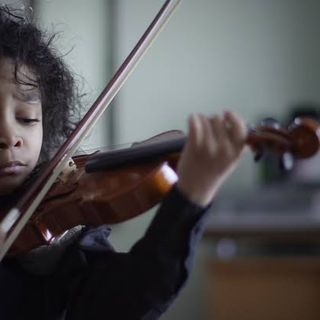During play, research has found, babies’ and adults’ brains experience the same brain activity — in other words, they share the same wavelength.
Conducted by researchers from the Princeton University Baby Lab, which studies how babies learn to see, talk and understand the world, the study found neural activity (brainwaves) in brains of both babies and adults fell and rose together when they shared toys and made eye contact.
“Previous research has shown that adults’ brains sync up when they watch movies and listen to stories, but little is known about how this ‘neural synchrony’ develops in the first years of life,” Elise Piazza, an associate research scholar in the Princeton Neuroscience Institute (PNI) and the first author of the study published in Psychological Science, said in a press release.
Neural synchrony plays an important role in social development and in helping humans learn language. For similar studies in the past, researchers have used functional magnetic resonance imaging (fMRI) for adults and babies in separate sessions, as they lay down and watched movies or heard stories, to assess how neural synchrony works. For this study, researchers relied on real-time, face-to-face communication during which scientists developed a dual brain neuroimaging system that helped them assess coordination as babies and adults played with toys, sang songs, and read books.
Related on The Swaddle:
How to Boost Executive Functioning Skills in Babies
For the experiment, scientists had one adult interact with 18 infants and toddlers. In part one of the experiment, the adult spent five minutes interacting directly with the child by playing with toys, singing nursery rhymes, or reading a book while the child sat on their parents’ lap. In the second part, one adult told the story to another adult while the child played quietly with their parent.
On analyzing the data, researchers found that in part one of the experiment, when an adult and a child were interacting face-to-face, their brains were synchronized in various areas. From the second experiment, when children weren’t directly engaging with the adult in the study, researchers found the coupling or synchronization had disappeared. There were also a few surprises, the researchers said: For instance, the strongest synchronization was found in the prefrontal cortex, which is responsible for learning, planning, and executive function — a region previously thought to be underdeveloped during infancy.
“We were also surprised to find that the infant brain was often ‘leading’ the adult brain by a few seconds, suggesting that babies do not just passively receive input but may guide adults toward the next thing they’re going to focus on: which toy to pick up, which words to say,” Casey Lew-Williams, who is a co-director of the Princeton Baby Lab, said in the statement.
“While communicating, the adult and child seem to form a feedback loop,” Piazza added. “That is, the adult’s brain seemed to predict when the infants would smile, the infants’ brains anticipated when the adult would use more ‘baby talk,’ and both brains tracked joint eye contact and joint attention to toys. So, when a baby and adult play together, their brains influence each other in dynamic ways.”




